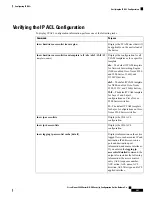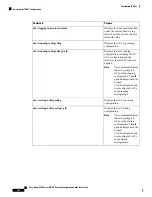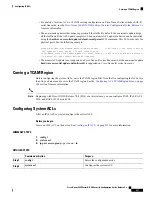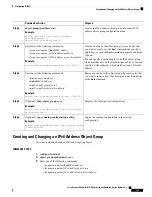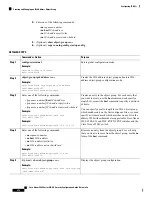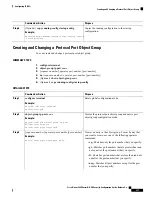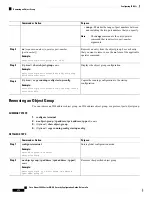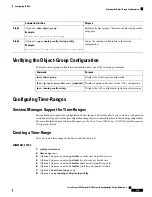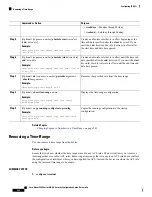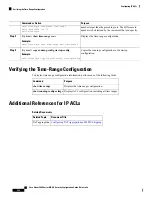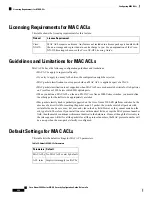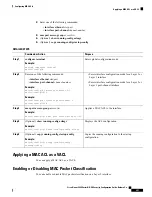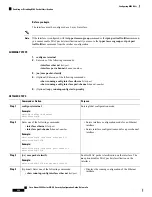
Purpose
Command or Action
Copies the running configuration to the startup
configuration.
(Optional)
copy running-config startup-config
Example:
Step 6
switch(config-ipv6addr-ogroup)# copy running-config
startup-config
Creating and Changing a Protocol Port Object Group
You can create and change a protocol port object group.
SUMMARY STEPS
1.
configure terminal
2.
object-group ip port name
3.
[
sequence-number
]
operator port-number
[
port-number
]
4.
no
{
sequence-number
|
operator port-number
[
port-number
]}
5.
(Optional)
show object-group name
6.
(Optional)
copy running-config startup-config
DETAILED STEPS
Purpose
Command or Action
Enters global configuration mode.
configure terminal
Example:
Step 1
switch# configure terminal
switch(config)#
Creates the protocol port object group and enters port
object-group configuration mode.
object-group ip port name
Example:
Step 2
switch(config)# object-group ip port
NYC-datacenter-ports
switch(config-port-ogroup)#
Creates an entry in the object group. For each entry that
you want to create, use one of the following operator
commands:
[
sequence-number
]
operator port-number
[
port-number
]
Example:
switch(config-port-ogroup)# eq 80
Step 3
•
eq
—Matches only the port number that you specify.
•
gt
—Matches port numbers that are greater than (and
not equal to) the port number that you specify.
•
lt
—Matches port numbers that are less than (and not
equal to) the port number that you specify.
•
neq
—Matches all port numbers except for the port
number that you specify.
Cisco Nexus 9000 Series NX-OS Security Configuration Guide, Release 9.x
277
Configuring IP ACLs
Creating and Changing a Protocol Port Object Group





